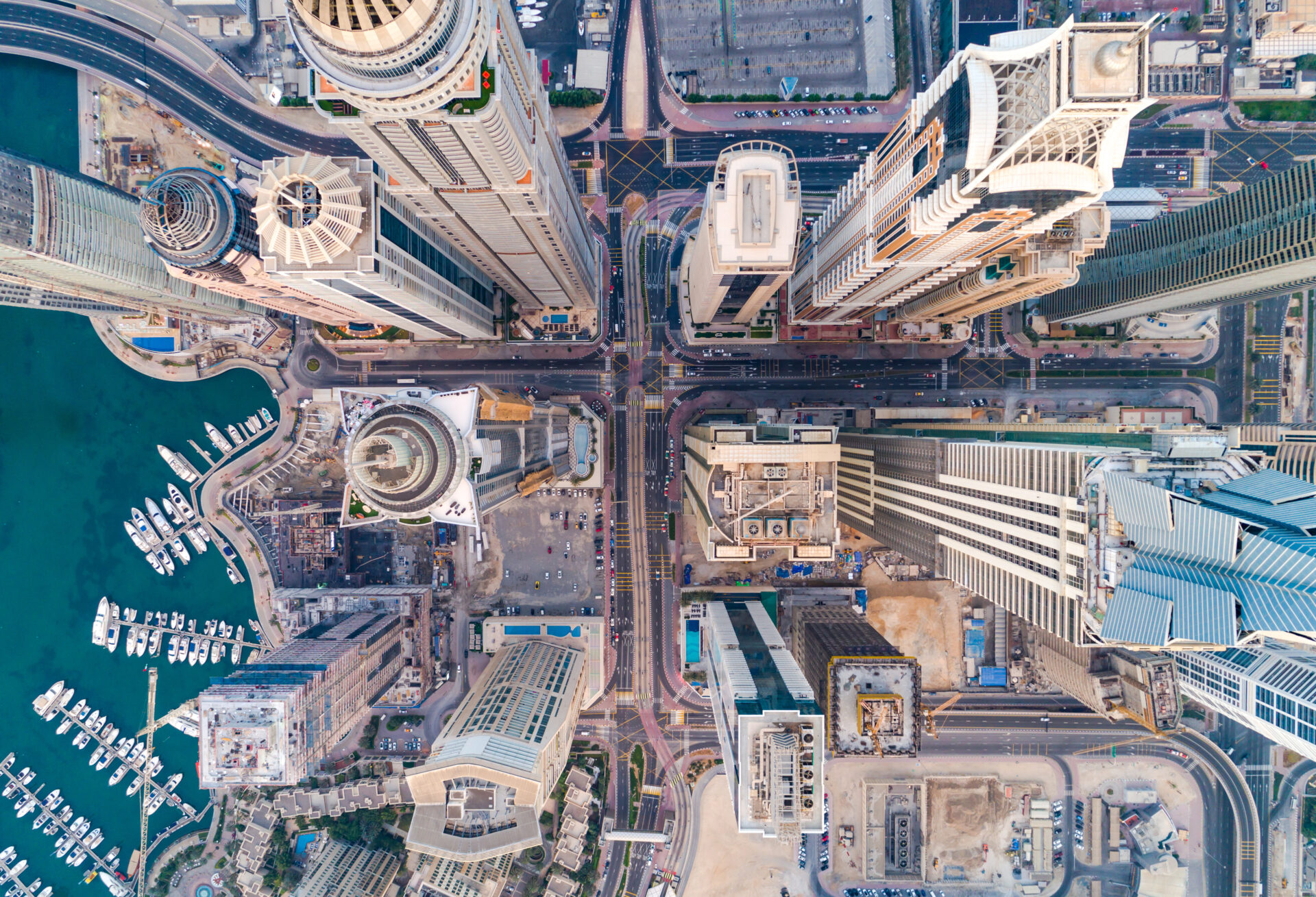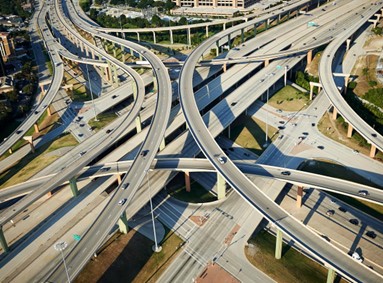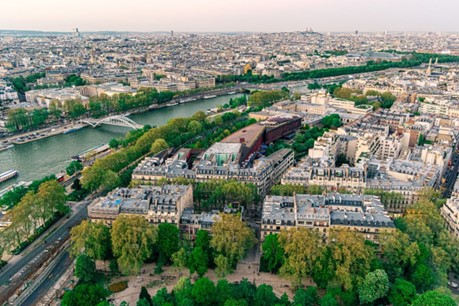
The 15 Minute City
A “15-minute city” is an urban planning concept designed to ensure that residents can meet most of their daily needs within a short, 15-minute walk or bike ride from their homes. This idea focuses on creating self-sufficient neighborhoods that provide easy access to essential services like grocery stores, healthcare, schools, parks, and workplaces. By prioritizing proximity and reducing the need for long commutes, the 15-minute city aims to enhance the quality of life, promote physical activity, and reduce environmental impact. This approach also fosters stronger community ties and supports sustainable urban development by encouraging walking, cycling, and public transportation over car dependency.
Brick by Brick: The Evolution of City Planning
Urban planning has been a cornerstone of how cities grow, starting with organized grids of ancient Roman cities, which established early principles of structured, efficient layouts. The Middle Ages saw a shift to more chaotic, organic street designs centered around sacred spaces, followed by the Renaissance’s reintroduction of grand, ordered urban planning. The Baroque era further expanded cities with monumental architecture, while the 19th century introduced contrasting approaches in Paris and London; one featuring grand boulevards and the other more organic growth. The 20th century saw both utopian and technocratic visions of city planning, leading to sprawling suburbs and, eventually, a resurgence of interest in more human-centered designs.
This long history of evolving urban philosophies has culminated in the 15-minute city, a modern concept that seeks to create sustainable, walkable neighborhoods where all essential services are within a 15-minute reach. This model reflects a significant return to the principles of livability and community that have shaped cities for centuries, emphasizing the importance of integrated, accessible urban spaces that promote environmental sustainability and enhance the quality of life. By reducing the reliance on vehicular travel and fostering local connectivity, the 15-minute city concept not only addresses contemporary urban challenges but also aligns closely with historical trends towards more compact, efficient urban planning. This approach advocates for a holistic view of urban development where function and form coalesce to meet modern needs without sacrificing the social fabric of community life.
Cracks in the Status Quo: Why Current City Designs Are Outdated
The urban landscape in many cities today remains fundamentally rooted in car-centric design, a paradigm that prioritizes vehicular movement over human connectivity. This approach has led to sprawling suburbs characterized by vast highways, isolated residential zones, and commercial centers that are inaccessible without a car. As a result, opportunities for spontaneous social interactions and community building have diminished. People increasingly find themselves disconnected from their neighbors and local environments, confined to their homes or vehicles with limited opportunities for casual encounters that foster a sense of belonging. In this way, the very design of modern cities contributes to social isolation and erodes the fabric of community life.
Moreover, this car-dominated infrastructure presents significant accessibility challenges for vulnerable demographics, including the elderly, children, and those with disabilities. These groups, who may lack access to personal vehicles, often face exclusion from social and economic activities, further entrenching inequality. Public transportation systems, which could provide an alternative, are often underfunded and insufficient to meet the needs of diverse populations. As a result, the physical and social divides in car-centric cities deepen, disproportionately affecting those already marginalized.
 The environmental and public health consequences of outdated city designs are equally alarming. By encouraging widespread car use, these urban layouts contribute to elevated pollution levels, increased carbon emissions, and rising rates of chronic health issues such as heart disease and obesity. Limited access to green spaces and pedestrian-friendly areas also reduces opportunities for physical activity, exacerbating public health crises. Additionally, the vast distances between residential, commercial, and recreational areas discourage walking and cycling, further contributing to sedentary lifestyles and unsustainable living patterns. The negative environmental impact, combined with the strain on public health systems, highlights the urgent need for a shift toward more human-centered, ecologically sustainable urban planning models.
The environmental and public health consequences of outdated city designs are equally alarming. By encouraging widespread car use, these urban layouts contribute to elevated pollution levels, increased carbon emissions, and rising rates of chronic health issues such as heart disease and obesity. Limited access to green spaces and pedestrian-friendly areas also reduces opportunities for physical activity, exacerbating public health crises. Additionally, the vast distances between residential, commercial, and recreational areas discourage walking and cycling, further contributing to sedentary lifestyles and unsustainable living patterns. The negative environmental impact, combined with the strain on public health systems, highlights the urgent need for a shift toward more human-centered, ecologically sustainable urban planning models.
Rising Up: The Principles Behind the 15 Minute City
The concept of the 15-minute city is revolutionizing urban planning by focusing on creating vibrant, sustainable, and connected communities where residents can access everything they need within a short walk or bike ride. Rooted in 4 principles that emphasize environmental sustainability, accessibility, community engagement, and citizen involvement, the 15-minute city seeks to reimagine how we live, work, and interact in our urban spaces. Below are the core principles that guide this transformative approach:
1. Ecology: Cities incorporating green spaces, reduced pollution, and energy-efficient practices ensure sustainability and improved quality of life
2. Proximity: Designing cities where essential services are within a 15-minute walk or bike ride enhances accessibility and reduces carbon emissions
3. Solidarity: Promoting community and social connections in neighborhoods enhances resilience and creates supportive urban environments
4. Participation: Involving citizens in urban planning fosters inclusivity and results in more effective community-driven initiatives
Cities Across the World: 15-Minute Cities in Action
Paris
Paris exemplifies the “15-minute city” concept by ensuring that essential urban functions, such as work, healthcare, education, and shopping, are accessible within a 15-minute walk or bike ride. This decentralized model promotes self-sufficient neighborhoods with a blend of homes, offices, stores, and public spaces, reducing long commutes and car dependence. With over 1,000 km of cycling paths and a budget of 75 million euros allocated for community-selected projects, Paris further enhances its transformation into a sustainable, pedestrian-friendly city. Key initiatives like converting Rue de Rivoli for bike and pedestrian use reflect this shift toward creating a connected, resilient urban environment that fosters community engagement and sustainability.

Portland
Portland’s implementation of the 15-minute city concept integrates land use, transportation, economic development, and greenspaces to ensure all essential services and amenities are within a 15-minute walk or bike ride from homes. This initiative focuses on fostering equitable neighborhoods by emphasizing accessibility for all residents, especially those in historically underserved areas. Strategic planning and community partnerships drive this approach, with current evaluations showing that approximately 64% of Portland now qualifies as a 15-minute city, marking substantial progress towards a more connected and equitable urban environment.
Melbourne
Melbourne, consistently ranked as the third most livable city globally, showcases its commitment to enhancing urban livability through the development of 20-minute neighborhoods. This initiative ensures that most daily necessities, such as childcare, GP services, and pharmacies, are accessible within a 20-minute walk, especially in the inner and middle suburbs. The city’s comprehensive planning strategies have successfully facilitated broad access to essential services, fostering an environment where daily errands do not require a vehicle. This model not only supports sustainable urban growth but also highlights Melbourne’s proactive approach to urban planning, reinforcing its high livability ranking.
Role of technology
Technology plays a pivotal role in the 15-minute city, serving as the backbone for efficient urban management and enhanced quality of life. Through the use of real-time data collection and analysis, technology enables better coordination of public services, streamlined traffic management, and meticulous environmental monitoring. Smart infrastructure, including integrated transportation systems and energy-efficient buildings, bolsters sustainable urban living by reducing resource consumption and emissions. Furthermore, digital platforms increase the accessibility of local services, providing residents with seamless access to everything from healthcare appointments to local business offerings, ensuring that essential needs are met within a convenient, short distance.
Improvements to infrastructure
The infrastructure improvements essential for the 15-minute city focus on promoting walkability and cycling, alongside the development of public spaces designed for multiple uses. By redesigning streets to prioritize pedestrians and cyclists, and expanding green spaces, these cities encourage a reduction in car dependency. Moreover, substantial investments in public transportation aim to enhance accessibility and efficiency, enabling residents to navigate their neighborhoods with ease and comfort.
Impacts on Urban Life
While the 15-minute city concept offers a vision of sustainable and inclusive urban development, it also confronts several challenges. Issues such as gentrification might displace less affluent residents, diminishing the model’s inclusivity. Additionally, the concept’s applicability might be limited in areas with low population densities or inadequate transportation infrastructures. Despite these hurdles, the 15-minute city framework strives to forge communities where essential services are just a short walk or bike ride away, fostering greater social cohesion, enhancing public health, and promoting environmental sustainability.
This model emphasizes reducing pollution and enhancing connectivity, integrating smart technology and active citizen participation to reshape urban landscapes. By redefining urban development, the 15-minute city not only addresses immediate environmental and social challenges but also paves the way for a resilient, equitable, and sustainable future, making our cities more livable and responsive to the needs of all their residents.
References:
- University of Melbourne (2024)
- UCEM (2024)
- World Resources Institute (2023)
- Vox (2022)
- CNU (2021)
- University of Florence (2020)
- Deloitte (2020)
- Elsevier (2019)
- Victoria State Government (n.d.)
- City of Portland (n.d.)
- 20th Century Architecture (n.d.)
